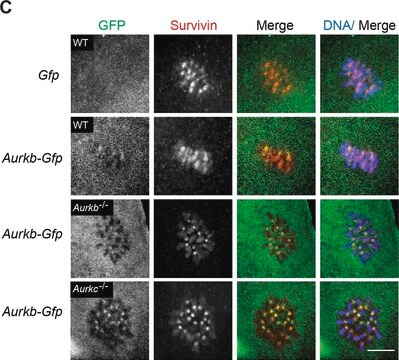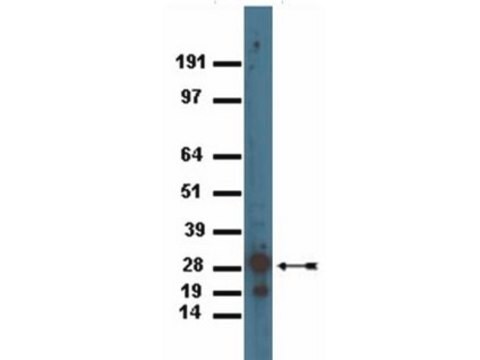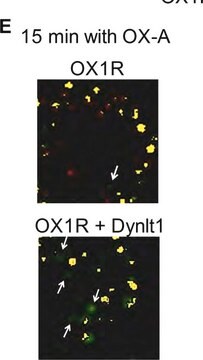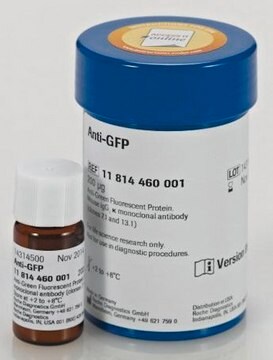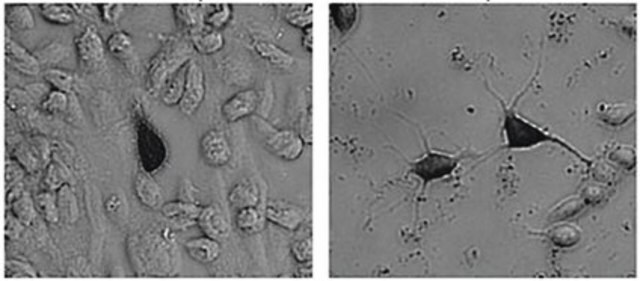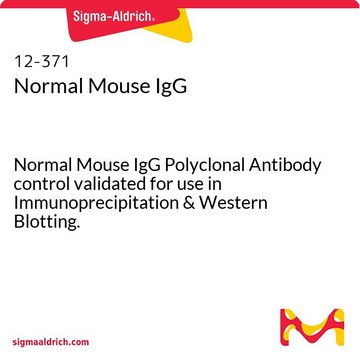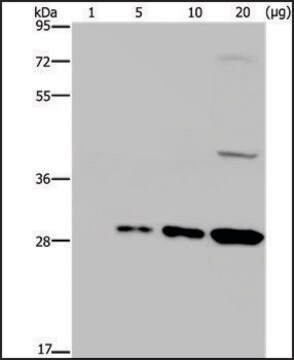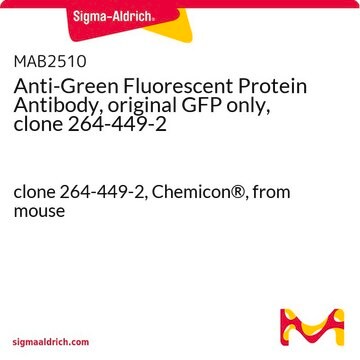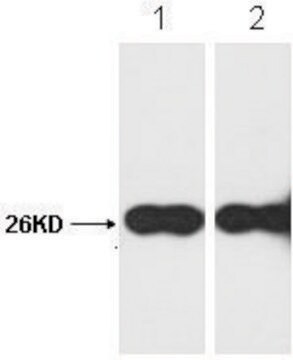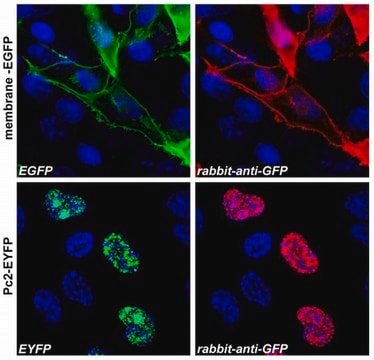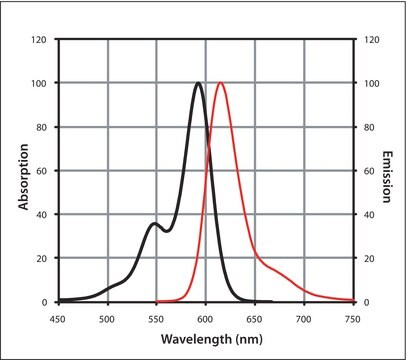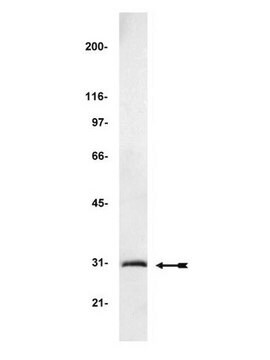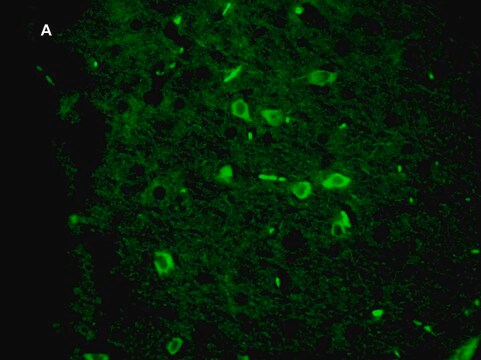Kluczowe dokumenty
SAB4200681
Anti-Green Fluorescent Protein (GFP) antibody, Mouse monoclonal
clone GFP-20, purified from hybridoma cell culture
Synonim(y):
Monoclonal Anti-Green Fluorescent Protein (GFP) antibody produced in mouse, green fluorescent protein
About This Item
Polecane produkty
pochodzenie biologiczne
mouse
Poziom jakości
forma przeciwciała
purified antibody
rodzaj przeciwciała
primary antibodies
klon
GFP-20, monoclonal
Formularz
buffered aqueous solution
masa cząsteczkowa
antigen 27 kDa
reaktywność gatunkowa
rat, human
stężenie
~1 mg/mL
metody
immunoblotting: 1-2 μg/mL using whole extract of human HEK-293T cells over-expressing GFP tagged fusion protein.
immunoprecipitation (IP): 5-10 μg using whole extract of human HEK-293T cells over-expressing GFP tagged fusion protein.
izotyp
IgG1
Warunki transportu
dry ice
temp. przechowywania
−20°C
docelowa modyfikacja potranslacyjna
unmodified
Opis ogólny
Specyficzność
Immunogen
Zastosowanie
- immunoblotting
- immunoprecipitation
- dot blot
- enzyme-linked immunosorbent assay (ELISA)
- scanning electron microscope (SEM)
Działania biochem./fizjol.
Postać fizyczna
Przechowywanie i stabilność
Oświadczenie o zrzeczeniu się odpowiedzialności
Nie możesz znaleźć właściwego produktu?
Wypróbuj nasz Narzędzie selektora produktów.
polecane
Kod klasy składowania
10 - Combustible liquids
Temperatura zapłonu (°F)
Not applicable
Temperatura zapłonu (°C)
Not applicable
Wybierz jedną z najnowszych wersji:
Certyfikaty analizy (CoA)
Nie widzisz odpowiedniej wersji?
Jeśli potrzebujesz konkretnej wersji, możesz wyszukać konkretny certyfikat według numeru partii lub serii.
Masz już ten produkt?
Dokumenty związane z niedawno zakupionymi produktami zostały zamieszczone w Bibliotece dokumentów.
Klienci oglądali również te produkty
Global Trade Item Number
| SKU | GTIN |
|---|---|
| SAB4200681-100UL | 4061837518775 |
Nasz zespół naukowców ma doświadczenie we wszystkich obszarach badań, w tym w naukach przyrodniczych, materiałoznawstwie, syntezie chemicznej, chromatografii, analityce i wielu innych dziedzinach.
Skontaktuj się z zespołem ds. pomocy technicznej